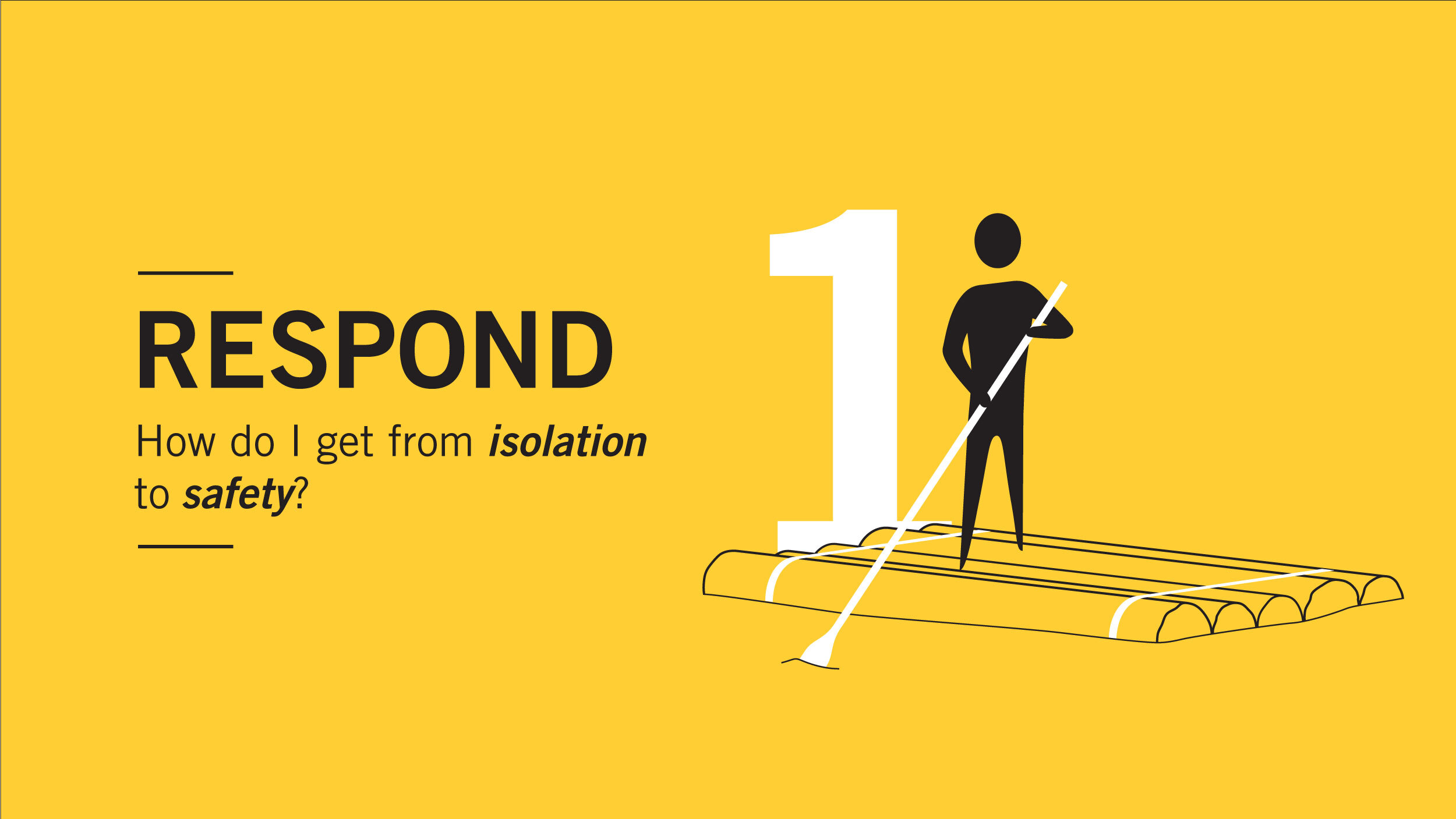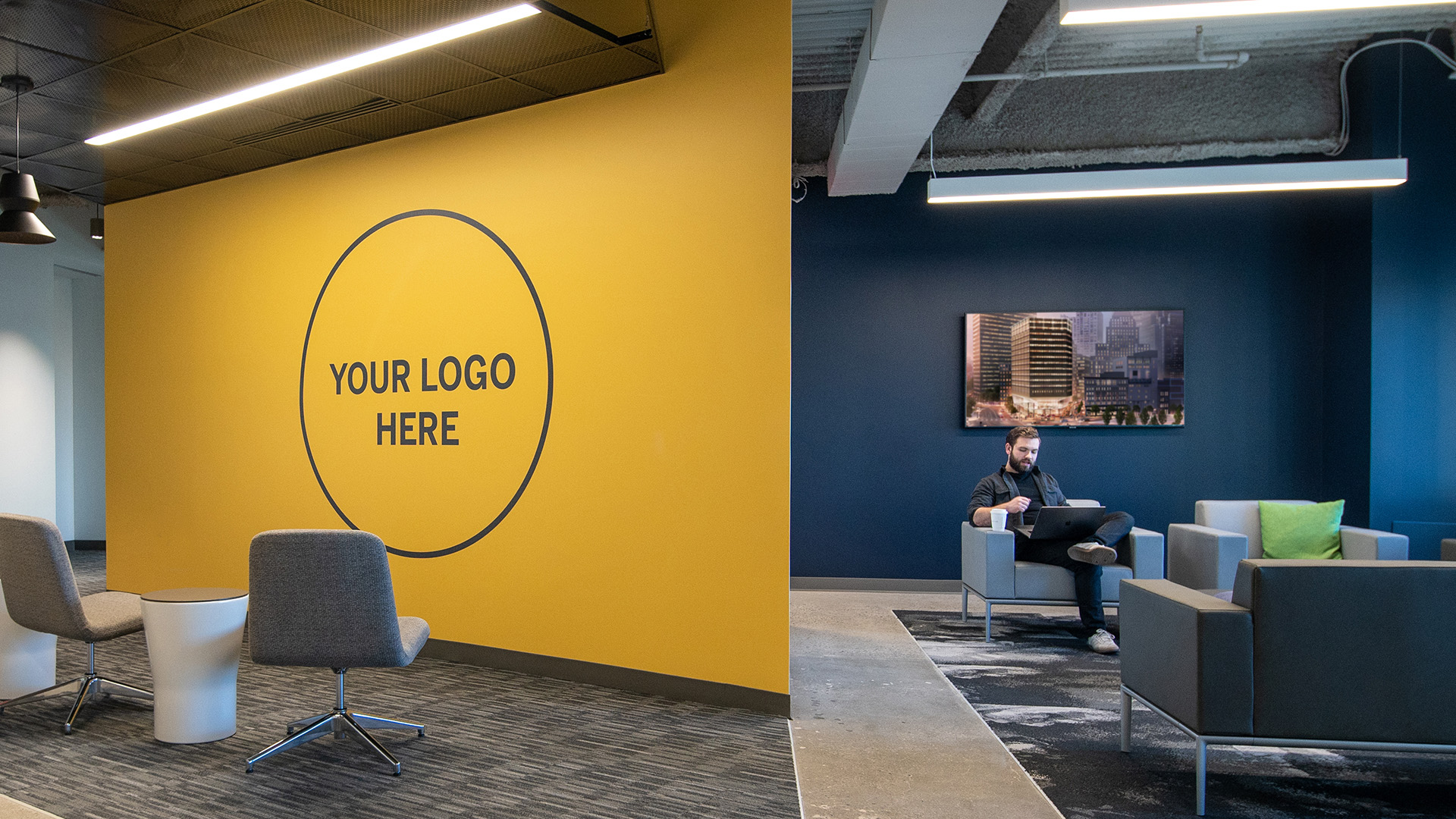The coronavirus pandemic is more than a moment to endure–it is a defining moment in our world history and will change our professional, social, and personal behaviors. As the economy begins to shift to a reopening, many businesses are modifying the workplace environment to address the continued health and safety protocols that are needed to eventually overcome this pandemic. Through research and continued industry conversations, LLM Design has organized an outline of issues and developed plans, strategies, and solutions for:
- Responding (to immediate needs),
- Recovering (to where and who we were before the pandemic), and
- Reimagining (to rethink how we will do things moving forward).
We gratefully acknowledge and appreciate the knowledge that has already been shared within our industry to help prepare us all for a safe workplace return.
ISSUE 01: RESPOND
As we walk into the unknown, companies inevitably have a range of questions and concerns about how to create a safe workplace for returning employees. We must respond to issues about safety, security, and coming back together by developing a plan that is customized to our needs. But what does that plan look like? Where does it come from? What does it include?
It’s also of critical importance to have your employees participate in these changes, so they can present feedback on what is working well, what isn’t, and what restrictions they are comfortable with loosening in the future. Like Maslow’s tree of hierarchical human needs, we must first respond to the basic physiological and safety needs before we can begin to satisfy the higher needs of belonging, esteem, and self-actualization.

Where do I start? Form a committee and make a plan. Make it broad enough that it covers future pandemics and disasters. Most importantly, remember that the plan will not be perfect the first time and must be iterative. As each company is different, so will be the policies.
- Act as if you are moving into a brand new office and look at the very basics of how your operations are run. Then think about what you need to continue. What zones do you need? What areas can be repurposed? Where can you store extra furniture?
- Ask yourself which employees truly need to come back in to the office every day. Evaluate the essential personnel that must return and those that are able to stay at home.
- Create a transition team of advocates, ambassadors, and knowledge retainers for employees to contact during the transition.
- Include your employees and give them choices. Do they want to come back? Do they want to come back part time? Do they have suggestions?

What should my post pandemic plan include? Every company’s plan will look differently, but there are some basic questions you can ask yourself to get started. Respond to the immediate need to re-open your business, but don’t forget to remember where you want to be and what will work for you without hindering your business.
- Create strategies for communication, operations, and physical space.
- Outline a fall/winter plan that describes actions to take during various pandemic levels. “Green” being the new normal, “Yellow” signaling a phased re-opening, and “Red” indicating a pandemic worst case scenario. What will your business and your employees need to continue working during these scenarios?
- Create physical space layouts to rearrange furniture and assign new uses to conference rooms and public spaces. More on this topic in our Recovery issue.
- Identify locations for signage and define circulation pathways.
- Develop team work schedules. Identify times and areas where social distancing will be important to implement and practice.
- Assign ambassadors who are not necessarily your typical management staff to help implement and explain new safety protocols.
- Identify the digital tools needed to manage your operations.
- List regulations for safe work practices.
- Coordinate with building management for public space access and rules. Educate your employees about these regulations.
At the end of your planning phase, you should have a new handbook that is custom to your company’s specific needs and culture. Be proactive, not reactive.
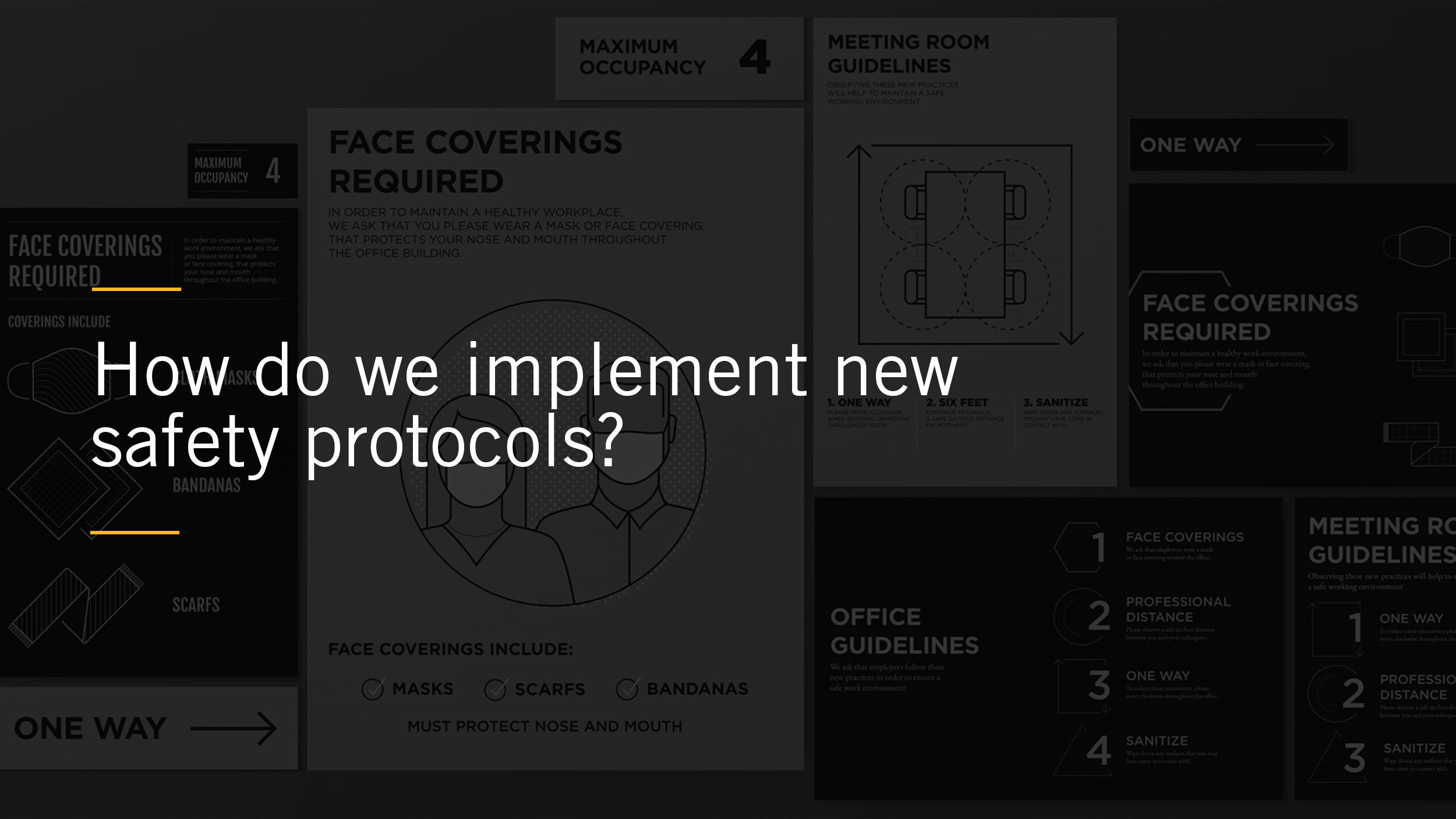
How do we implement new safety protocols? First and foremost, involve your employees in this restructuring to help them feel invested. Provide them specific avenues of communication to direct their concerns about specific policies or changes. Feedback is essential.
- Heightened transparency throughout this process is critical to creating a safe environment, building trust, and boosting morale.
- Design and post signage that accompanies the new plan of action and accompanying protocols. Employees are aware of the levels of responsibilities and put them into practice. The signage should stand out, but also speak to the language of your brand. Designing seamless information graphics and signage is an important part of retaining your company brand culture and can help alleviate the anxiety of change. More on this in our Recovery issue.
- Develop and install new wayfinding and signage: occupancy restrictions, personal/team responsibilities, pathways and directionals, blockades. More on this in our Recovery issue.
- Empower employees to have accountability for themselves, their teams, and their workplace “neighborhoods.”
- Everything starts from the top. Adopting and implementing these major changes as leaders will help others accept and follow.
- Define employee responsibility and expectations in a strong – but not policing— stance. Educate and encourage employees to offer feedback, while holding to a framework of regulatory guidelines.
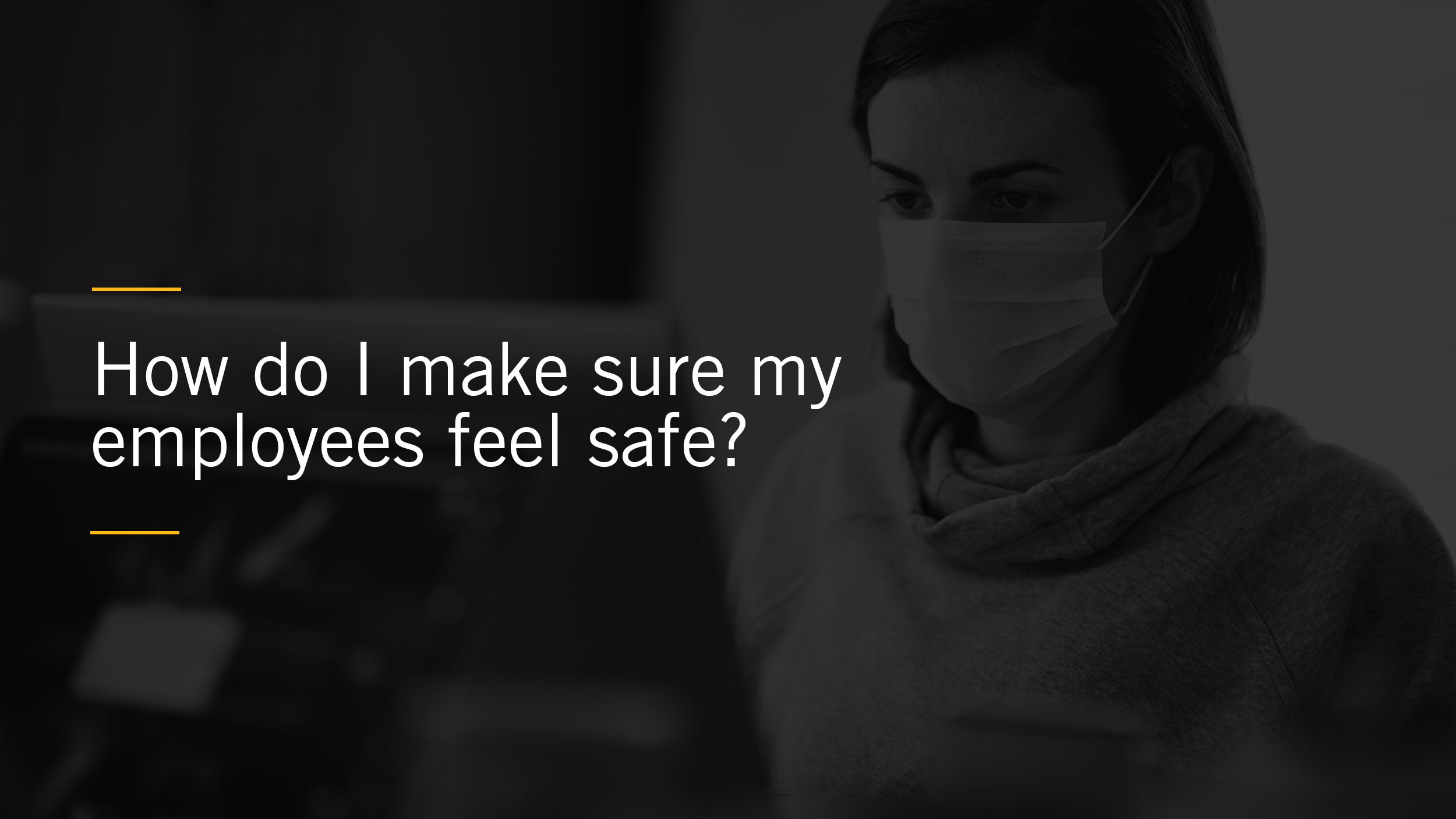
How do I make sure my employees feel safe? Not all employees will be impacted in the same way, so there’s no one policy or set of guidelines that will work for everyone. You will most likely need to address several different audiences with separate issues and concerns. Those continuing to work remotely will be less concerned with the physical safety of the office and more concerned with balancing life at home. Those coming into the office will want to make sure the office space is disinfected and that their colleagues are committed to practicing social distancing.
- Address employees’ unique needs and pain points with the appropriate communication, programs, and resources.
- Provide clear avenues for employee feedback in case you’ve missed someone in the shuffle.
- Be transparent with new cleaning protocols and procedures. If the cleaning staff is adding additional steps to disinfect the workplace, let your team know what these are.
- Install visible signs of safety measures–not just new signage, but also hands-free sanitizer stations, distance markers around work stations, and clearly marked paths of circulation.
- Offer multiple points—on-line, printed book manual, PDF, posters, hotline—to access guidelines, safety policies, and schedules.
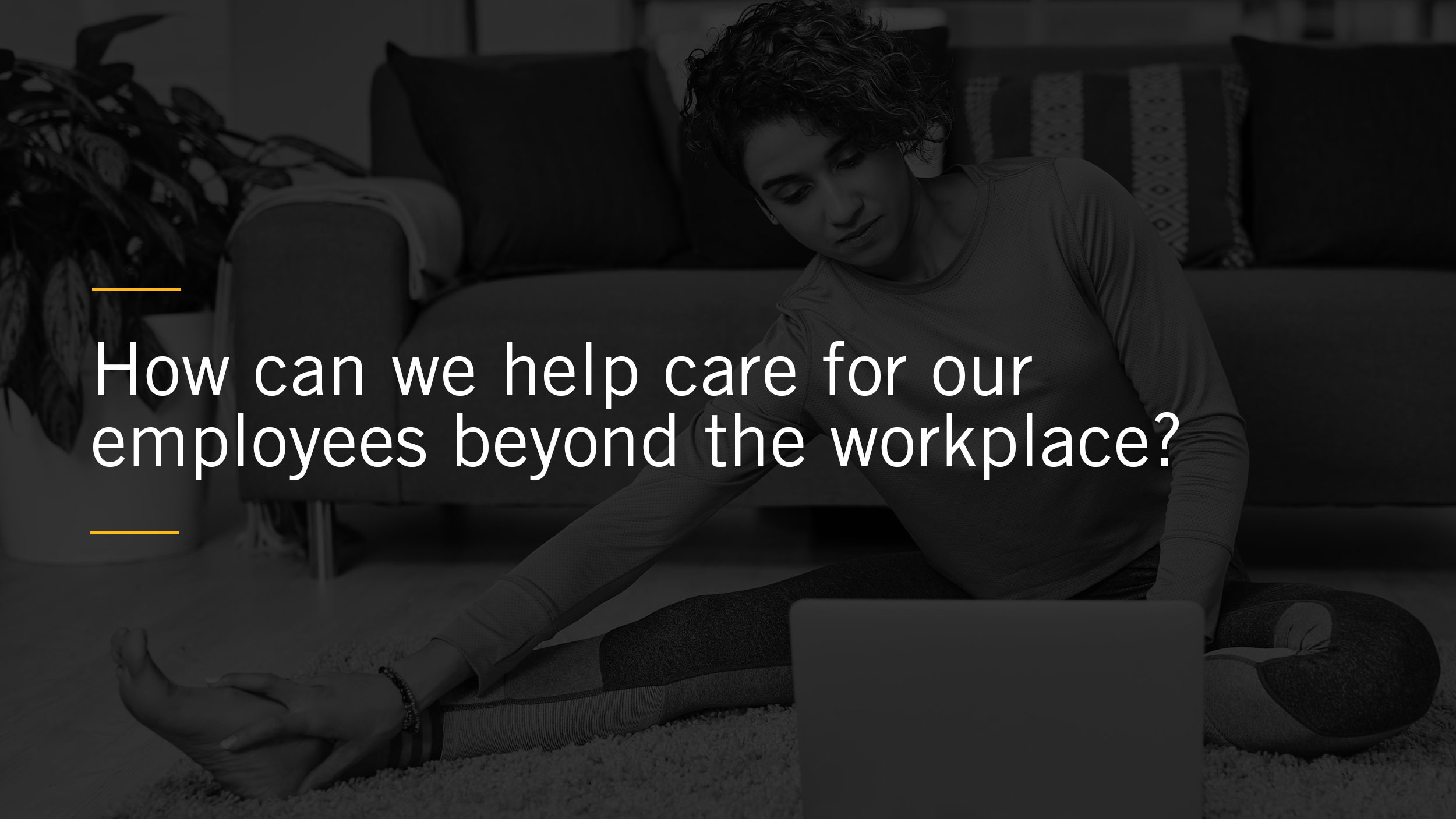
And lastly, how can we care for our employees beyond the workplace? Employees are the heart of your company and the body of your culture. With the loss of social interaction, anxiety of the unknown, and the stress of family responsibilities, it is more imperative now to care for your employees in different but creative ways. It is critical that we address the mental health of employees by finding engaging and positive ways to connect with each other. Accommodating employees with the opportunities to attend to their families so that they aren’t choosing work or family. Successfully investing in the wellbeing of your workforce takes an innovative mindset and a holistic approach.
- Provide employees access to talk to their team, co-workers, and mental health experts
- Connect through happy hours, team lunches, and meditation sessions.
- Address physical health by workout / yoga sessions or healthy individual lunch options provided to the office or at home.
- Actively listen and respond to employees. Let them tell you what stresses them out, what wellness benefits they need, what scheduling conflicts they have, and then act.
- Designate a certain amount of time for mental / physical health
- Create internal virtual support groups that can help employees connect with other coworkers that are going through similar situations as them.
- Think about ways to facilitate the “water cooler conversation.” Many employees rely on the office for social outlets and will still be looking for ways to connect with each other.
- Hire speakers and experts that can address these new life challenges.
- Make sure everyone is familiar with the latest digital tools they could be using. Encourage IT to host regular how-to sessions with tips and tricks.
- Encourage events focusing on personal “shares” such as artistic endeavors, philanthropic outreach, or family stories.
We know you’ve heard it, but we’ll say it again: “We are all in this together.” This should be the underlying message as you move forward with your response on Day 1. Stay tuned for our next issues about how we RECOVER back to our brand strengths and values and REIMAGINE ourselves and our organizations for the new normal. Please give us a shout if you’d like to set up a meeting or learn more about our Post Pandemic Workplace Strategy services.
